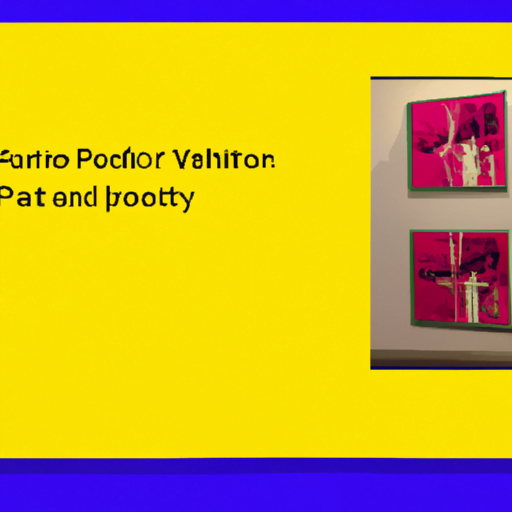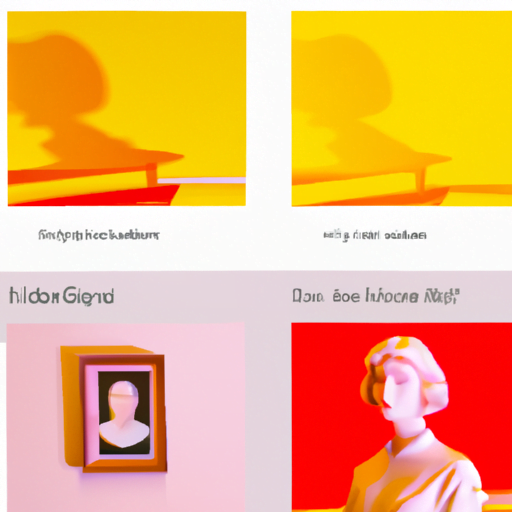
-
Table of Contents
- AI-Generated Virtual Exhibitions: Expanding Artistic Reach
- The Rise of AI in the Art World
- Benefits of AI-Generated Virtual Exhibitions
- 1. Accessibility
- 2. Preservation
- 3. Enhanced Interactivity
- Impact on the Art World
- 1. Democratization of Art
- 2. Collaboration and Curation
- 3. New Artistic Possibilities
- Conclusion
AI-Generated Virtual Exhibitions: Expanding Artistic Reach

Art has always been a powerful medium for human expression, allowing artists to convey their thoughts, emotions, and perspectives. Traditionally, art exhibitions have been limited to physical spaces, restricting the audience to those who can physically visit the gallery or museum. However, with the advent of artificial intelligence (AI), a new era of virtual exhibitions has emerged, expanding the artistic reach beyond geographical boundaries. In this article, we will explore the concept of AI-generated virtual exhibitions, their benefits, and their impact on the art world.
The Rise of AI in the Art World
Artificial intelligence has made significant advancements in various fields, and the art world is no exception. AI algorithms can now analyze vast amounts of data, recognize patterns, and generate new content. This technology has opened up new possibilities for artists and curators to create virtual exhibitions that can be accessed and enjoyed by anyone with an internet connection.
One notable example of AI-generated virtual exhibitions is the Google Arts & Culture platform. This platform uses AI algorithms to curate and present virtual exhibitions from museums and galleries around the world. Users can explore these exhibitions from the comfort of their homes, gaining access to artworks that they may never have had the opportunity to see otherwise.
Benefits of AI-Generated Virtual Exhibitions
AI-generated virtual exhibitions offer several benefits that enhance the artistic experience for both artists and audiences. Let’s explore some of these advantages:
1. Accessibility
One of the most significant advantages of AI-generated virtual exhibitions is their accessibility. Physical exhibitions are often limited by geographical constraints, making it difficult for people from different parts of the world to experience them. Virtual exhibitions, on the other hand, can be accessed from anywhere, allowing art enthusiasts to explore and appreciate artworks without the need for travel.
For example, the Louvre Museum in Paris attracts millions of visitors each year. However, not everyone can afford to travel to Paris to visit the museum. By creating virtual exhibitions, the Louvre can reach a global audience, making art accessible to people who may never have the opportunity to visit in person.
2. Preservation
AI-generated virtual exhibitions also play a crucial role in preserving artworks. Physical artworks are susceptible to damage, deterioration, and even loss due to various factors such as climate, accidents, or theft. By digitizing artworks and creating virtual exhibitions, the risk of damage or loss is significantly reduced. This preservation effort ensures that future generations can continue to appreciate and study these artworks.
For instance, the Rijksmuseum in Amsterdam has digitized its entire collection, allowing users to explore the artworks online. This digital preservation effort ensures that even if a physical artwork is damaged or destroyed, its digital representation will continue to exist, preserving its artistic and historical value.
3. Enhanced Interactivity
AI-generated virtual exhibitions offer enhanced interactivity compared to traditional exhibitions. Users can engage with the artworks in unique ways, such as zooming in to see intricate details, accessing additional information about the artist or artwork, and even interacting with virtual reality (VR) or augmented reality (AR) elements.
For example, the Museum of Modern Art (MoMA) in New York created an AI-generated virtual exhibition called “Art Zoom.” This exhibition allows users to explore famous artworks in high resolution and learn more about them through audio guides. This interactive experience enhances the viewer’s understanding and appreciation of the artworks.
Impact on the Art World
The emergence of AI-generated virtual exhibitions has had a profound impact on the art world. Let’s examine some of the ways in which this technology has transformed the industry:
1. Democratization of Art
AI-generated virtual exhibitions have democratized art by making it accessible to a wider audience. People who may not have had the means or opportunity to visit physical exhibitions can now explore and appreciate artworks from around the world. This increased accessibility has the potential to inspire a new generation of artists and art enthusiasts.
2. Collaboration and Curation
AI algorithms can analyze vast amounts of data and recognize patterns, enabling curators to discover new connections between artworks and artists. This technology can assist curators in creating virtual exhibitions that highlight these connections, providing a fresh perspective on art history and fostering collaboration between artists and institutions.
3. New Artistic Possibilities
AI-generated virtual exhibitions have opened up new artistic possibilities for artists. They can now experiment with AI algorithms to create unique and interactive artworks that can be showcased in virtual exhibitions. This fusion of art and technology has the potential to push the boundaries of creativity and redefine the art world.
Conclusion
AI-generated virtual exhibitions have revolutionized the art world, expanding the artistic reach beyond physical boundaries. These exhibitions offer numerous benefits, including increased accessibility, preservation of artworks, and enhanced interactivity. They have democratized art, fostered collaboration and curation, and opened up new artistic possibilities. As technology continues to advance, AI-generated virtual exhibitions will undoubtedly play an even more significant role in the future of the art world, connecting artists and audiences in ways that were previously unimaginable.
